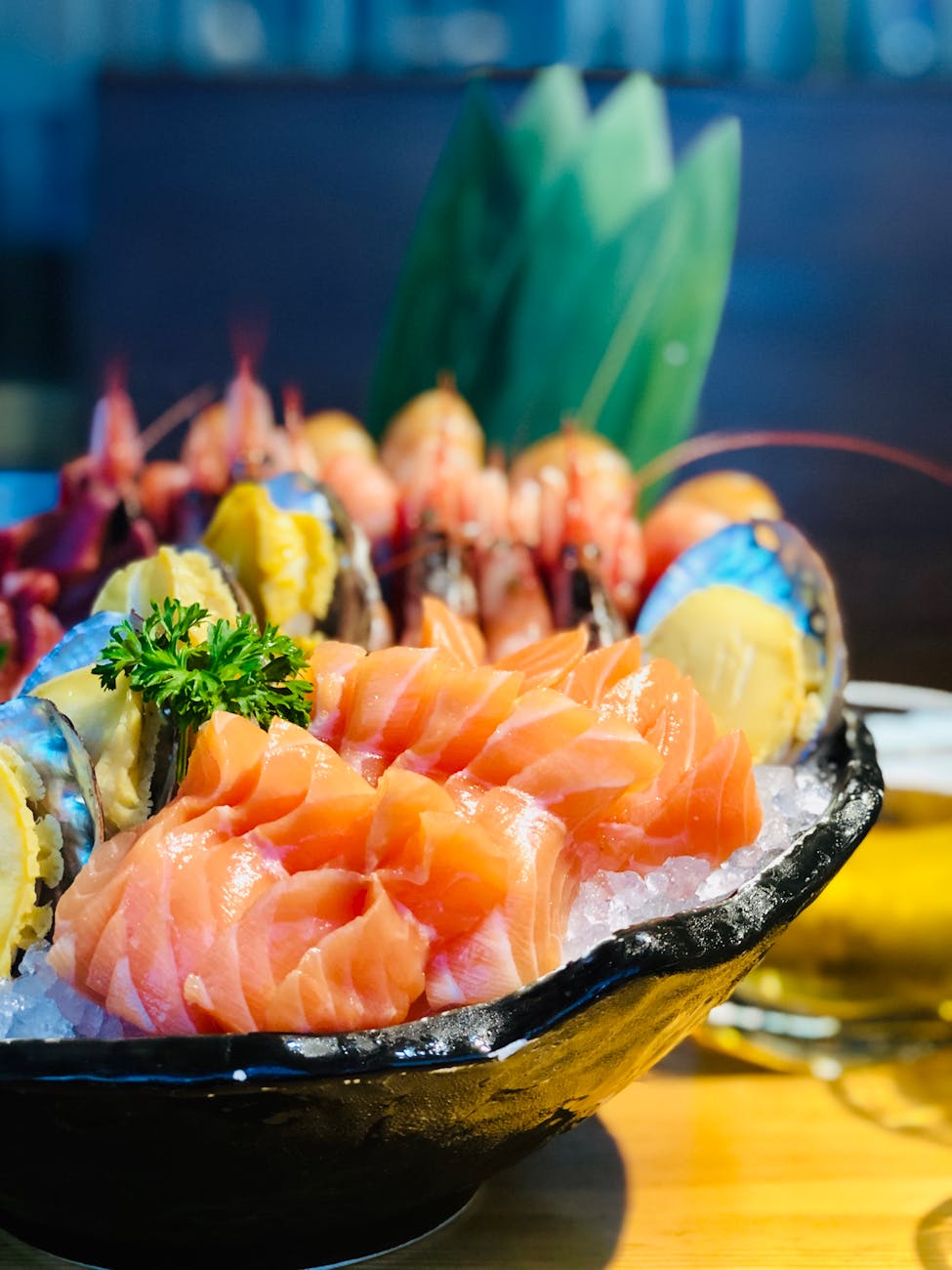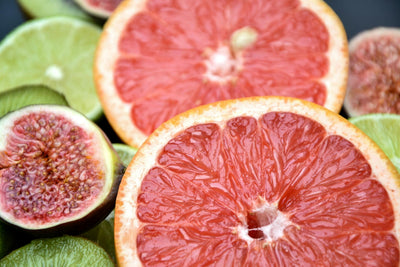Understanding Salmon Storage
Storing salmon correctly is crucial for maintaining its freshness, flavor, and nutritional value. Proper storage can also prevent foodborne illnesses caused by spoilage bacteria. Here's what you need to know about keeping your salmon in peak condition.
Importance of Properly Storing Salmon
Proper storage of salmon is vital for several reasons:
- Food Safety: Salmon, like all perishable foods, can harbor bacteria that multiply quickly at room temperature. Refrigeration slows bacterial growth, reducing the risk of foodborne illness.
- Quality Preservation: Salmon's texture and taste can deteriorate when exposed to air, moisture, and improper temperatures. Proper storage maintains the fish's quality.
- Waste Reduction: By extending the shelf life of salmon, you minimize food waste and get the most out of your purchase.
For insights into storing other types of perishable foods, you might be interested in learning about how pizza stays fresh mastering the storage of pizza in the fridge.
Factors Affecting Salmon Freshness
Several factors influence how long salmon can remain fresh in the fridge:
- Temperature: The colder the refrigerator, the slower the spoilage rate. It's essential to crack the code decoding the ideal fridge temperature for optimal freshness.
- Packaging: Proper packaging prevents exposure to air and contaminants. Vacuum-sealed or tightly-wrapped salmon will last longer.
- Freshness at Purchase: The fresher the salmon when bought, the longer it can be stored. Always check the sell-by date and buy from reputable sources.
- Type of Salmon: Wild-caught salmon may have a shorter fridge life than farm-raised varieties due to their diet and environment prior to capture.
Understanding these factors can help you make informed decisions about your food storage practices, whether you're looking at salmon or exploring the best bottom freezer refrigerator for organization.
By recognizing the importance of proper storage and the factors that affect the freshness of salmon, you can ensure that you enjoy this delicious and nutritious fish at its best. Remember, the key to freshness unleashed is knowing how long can salmon last in the fridge and taking the necessary steps to preserve its quality.
Freshness Guidelines
To maintain the freshness and quality of salmon, understanding the proper storage guidelines is crucial. This section covers the general principles for storing salmon as well as the recommended temperature settings for preservation.
General Guidelines for Storing Salmon
When you bring salmon home, your priority should be to store it correctly to maximize its shelf life. Here are some essential tips:
- Refrigerate the salmon as soon as possible after purchase.
- Keep it in the coldest part of the refrigerator, away from the door to avoid temperature fluctuations.
- If the salmon is not pre-packaged, wrap it tightly in plastic wrap, aluminum foil, or place it in an airtight container to prevent air exposure and moisture loss.
- Use the salmon within 1-2 days for optimal freshness, though it can last up to 3 days when stored properly.
By following these guidelines, you can ensure that your salmon remains as fresh as possible until you're ready to cook it. For more information on storing other types of food, consider reading our article on how long does pizza stay good in the fridge.
Recommended Storage Temperature
The ideal temperature for storing salmon in the refrigerator is at or below 40°F (4°C). This temperature range slows down the growth of bacteria and helps preserve the salmon's quality.
| Storage Location | Temperature Range |
|---|---|
| Refrigerator | 32°F to 40°F (0°C to 4°C) |
| Freezer | 0°F (-18°C) or below |
It's essential to maintain a consistent temperature to prevent the salmon from entering the temperature danger zone (between 40°F and 140°F), where bacteria can rapidly multiply. To help you crack the code on the perfect fridge temperature, you might find our guide on decoding the ideal fridge temperature useful.
Remember, the key to 'freshness unleashed how long can salmon last in the fridge' is prompt and proper storage. By adhering to these guidelines and keeping your refrigerator at the correct temperature, your salmon will remain fresh and ready for your next delicious meal.
Refrigerator Storage
Storing salmon in the refrigerator is a common practice for preserving freshness. Understanding the optimal duration for refrigeration and the best methods to store salmon can help maintain its quality and safety for consumption.
How Long Can Fresh Salmon Last in the Fridge?
Fresh salmon, when stored properly, can last in the fridge for up to 1 to 2 days. The key to maximizing freshness is ensuring that the salmon is refrigerated promptly after purchase. Here's a table to guide you on the storage times for fresh and cooked salmon:
| Type of Salmon | Storage Time in Fridge |
|---|---|
| Fresh Salmon (uncooked) | 1-2 days |
| Cooked Salmon | 3-4 days |
For more specific information on how long other food items last in the fridge, such as pizza or milk, you can read our articles on how long pizza stays fresh and how long can milk last outside the fridge.
Tips for Refrigerating Salmon Properly
Proper refrigeration of salmon is essential to extend its shelf life and maintain its freshness. Here are some tips to ensure that your salmon stays as fresh as possible in the fridge:
-
Chill Promptly: Place salmon in the refrigerator as soon as possible after purchasing. The less time it spends at room temperature, the better.
-
Use Airtight Containers: Store salmon in airtight containers or resealable plastic bags to prevent air exposure and contamination.
-
Keep It Cold: Store salmon at the recommended refrigerator temperature, which is usually below 40°F (4°C). You can learn more about the ideal fridge temperatures in our article on decoding the ideal fridge temperature.
-
Separate Raw and Cooked: Keep raw salmon separate from cooked and ready-to-eat foods to avoid cross-contamination.
-
Use Ice: If you want to extend the freshness of salmon beyond a couple of days, consider placing it on a bed of ice in the fridge, ensuring the water is drained and the ice is replaced frequently.
For individuals who are interested in different types of refrigeration solutions, whether for a compact space or a large kitchen, you can explore articles on the perfect retro small refrigerator or the best bottom freezer refrigerator for organization.
Remember, these tips for refrigerating salmon properly are part of the broader topic of 'freshness unleashed how long can salmon last in the fridge'. Following these guidelines will help ensure that you enjoy your salmon at its best quality and flavor.
Signs of Spoilage
Recognizing when salmon has spoiled is crucial to ensure your health and safety. It's important to note that consuming spoiled salmon can lead to foodborne illness.
How to Tell If Salmon Has Gone Bad
If you're wondering whether your salmon is still fresh, there are several signs to look for. Trust your senses and inspect the fish carefully before consumption.
- Smell: Fresh salmon should have a mild, sea-like scent. If the fish emits a strong, sour, or ammonia-like odor, it's a clear indication that it has gone bad.
- Texture: The flesh of the salmon should be firm to the touch. If it feels slimy or sticky, bacteria may have started to grow, and it's best to discard the fish.
- Color: Look for any discoloration or fading. Fresh salmon should have a vibrant pink or red hue. If it appears dull or grayish, it's a sign of spoilage.
- Eyes and Gills: If the salmon still has its head, the eyes should be clear and slightly bulging. Cloudy, sunken eyes and brown or gray gills are indicators of old fish.
- Expiration Date: Always check the sell-by or use-by date as a guideline. If the date has passed, it's safer to err on the side of caution and not consume the fish.
Common Spoilage Indicators
| Sign of Spoilage | Description |
|---|---|
| Odor | A strong, sour, or ammonia-like smell |
| Texture | Slimy or sticky to the touch |
| Color | Dull, faded, or grayish tint |
| Eyes | Cloudy and sunken (if whole fish) |
| Gills | Brown or gray color (if whole fish) |
| Expiration | Past the sell-by or use-by date |
If you notice any of these spoilage indicators, it's best to avoid consuming the salmon to prevent potential foodborne illnesses. For other foods and their storage information, you might be interested in reading about how long pizza stays fresh in the fridge or how long can milk last outside the fridge.
Remember that proper storage can greatly influence the shelf life of your salmon. Explore articles such as cracking the code on the ideal fridge temperature or the best bottom freezer refrigerator for organization to ensure you're storing your salmon and other perishables correctly. For more tips on handling and prepping your fish, check out our guide on safe cooking practices for salmon.
Extending Freshness
Properly preserving salmon not only ensures safety but also maintains its quality and taste. Here are methods to extend the freshness of salmon and tips for freezing it for long-term storage.
Methods to Extend the Shelf Life of Salmon
To keep your salmon fresh for as long as possible, consider the following:
- Chill Promptly: As soon as you bring salmon home, refrigerate it immediately to prevent bacterial growth.
- Airtight Packaging: Use vacuum-sealed bags or wrap the salmon tightly in plastic wrap or aluminum foil to minimize exposure to air.
- Marinating: Adding an acidic marinade can slow down bacterial growth and add flavor.
- Use of Ice: When storing in the fridge, place the salmon on a bed of ice to keep the temperature down.
Properly Freezing Salmon for Long-Term Storage
Freezing salmon is an effective way to preserve its freshness for an extended period. Follow these steps for optimal long-term storage:
- Preparation: If the salmon is fresh, clean it thoroughly under cold water and pat it dry with paper towels.
- Portioning: Cut the salmon into meal-sized portions to avoid thawing more than you need at one time.
- Wrapping: Wrap each portion tightly with cling film, making sure there are no gaps or air pockets.
- Overwrap: For added protection, place the wrapped portions in a heavy-duty freezer bag or airtight container.
- Labeling: Mark each package with the date of freezing to keep track of how long the salmon has been stored.
- Freezing: Place the salmon in the coldest part of your freezer, ensuring that it is kept at a consistent temperature of 0°F (-18°C) or below.
| Storage Method | Shelf Life |
|---|---|
| Refrigeration | 1-2 days |
| Freezer (0°F/-18°C) | Up to 3 months |
For those looking to explore different refrigeration options, check out articles on a charming and compact retro small refrigerator or the best bottom freezer refrigerator for organization. You can also dive into the specifics of ideal storage temperatures by reading cracking the code: decoding the ideal fridge temperature.
By following these steps, you can enjoy your salmon for longer periods, ensuring that you always have a delicious and nutritious meal ready to go. Whether you prefer to keep it in the fridge or opt to freeze it for future use, proper storage techniques are key to maintaining the quality of your salmon.
Cooking and Consumption
Once you've mastered the art of storing salmon in your refrigerator, ensuring its freshness, the next step is to prepare and consume it safely. Proper cooking and handling are essential to enjoy not only the taste but also the health benefits of salmon.
Safe Cooking Practices for Salmon
When you're ready to cook your salmon, it's important to follow safe cooking practices. Salmon should be cooked to an internal temperature of 145°F (63°C) to ensure that it is safe to eat. Use a food thermometer to check the thickest part of the fish. Here are some tips for cooking salmon:
- Preheat your cooking surface: Whether you're grilling, baking, or pan-frying, make sure your cooking surface is at the right temperature before adding your salmon.
- Avoid overcooking: Overcooking can dry out the salmon. Keep an eye on the color and texture, and remove it from the heat once it flakes easily with a fork.
- Use oil or a non-stick pan: To prevent the salmon from sticking and to ensure even cooking.
For more on this topic, you might find our article on cracking the code decoding the ideal fridge temperature helpful.
Utilizing Leftover Salmon Safely
If you find yourself with leftover salmon, it's critical to store it correctly to maintain its quality and safety. Place leftovers in a shallow, airtight container or wrap them tightly with aluminum foil or plastic wrap and refrigerate within two hours of cooking. When stored properly, cooked salmon should be consumed within 3 days. Here are additional tips:
- Reheat with care: When reheating, ensure the salmon reaches an internal temperature of 145°F (63°C).
- Repurpose creatively: Leftover salmon can be used in salads, pasta dishes, or as a protein boost in wraps or sandwiches.
Remember, the key to enjoying salmon at its best is to ensure it is stored, cooked, and reheated safely. For more insights on storing other types of food, check out our article on preserve the flavor how long does pizza stay good in the fridge or the ultimate guide how long does celery last in the fridge.
By following these guidelines, you can savor your salmon dishes with confidence, knowing they are both delicious and safe to eat.
Get Your Upgrade or New Addition at Fridge.com
Shop the world's best brands at Fridge.com.
Whether you're searching for your perfect fridge, freezer, wine fridge, beer fridge, ice maker, or kegerator, we have what you need.
We also have tons of awesome articles about kitchen stuff and home news. Enhance your home, garage, backyard, patio, and office with the coolest essentials. With every necessary type of residential refrigerator or freezer in our collection, we've got you covered.
Elevate your game and shop now at Fridge.com!






